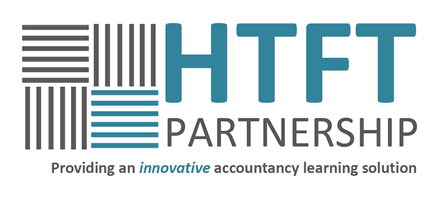HTFT Study Tips
Sep 03, 2022
Share This
Feeling lucky? Here are our top 13 study tips to help you get the most out of your exam preparation!
Study Tip 1: Flash/revision cards
Flash cards, or revision cards as you may know them, are an effective way of studying ‘static’ content – definitions, formulae, etc. Get yourself some A5 or A6 revision cards, and on one side write down a question (e.g., what is the formula for break-even point in units?) and on the other side, write down the answer (e.g., the fixed cost divided by [sales price per unit – variable cost per unit]). You are then able to test yourself or get others to test you. We have seen some students who colour coordinate their flashcards – using different colours for different sections of the syllabus, for example. It is important that as you use your flashcards, you spend time to re-write ones that you are not committing to memory. There are several free online/mobile flashcard tools that you can use too, like Quizlet.
Study Tip 2: Topic summaries
When you have finished studying a topic, you should create a one-page topic summary – collating all the important information from that topic on one piece of A4 paper. This can then sit at the front of your student notes. You need to then use these topic summaries, and work to re-create them from scratch. Recently, one student explained how they worked:
1. Study Topic 1 and build a topic summary.
2. Study Topic 2, build a topic summary and then recreate the Topic 1 summary (without looking at it).
3. Study Topic 3, build a topic summary and then recreate Topic 1 summary and Topic 2 summary 4, and so on.
Study Tip 3: The 45:10 rule
You need to think of your brain as a plug socket and, as with any plug socket, if you overload it then sparks fly! Break your study down into 45-minute sessions, with 10-minute breaks. Build yourself a study plan that breaks your study down into these 45-minute sessions and focus for that period before ‘rewarding’ yourself with a 10-minute break. It is a good idea to do something ‘physical’ in this break, maybe a walk, empty the dishwasher, vacuum, etc. Something that can take your mind off the material for a short while and refresh your brain, ready for the next study session.
Study Tip 4: The 1:3 rule
To analyse your question practice performance, you need to apply the 1:3 rule. For every minute you spend attempting questions, you need to spend (at least) three minutes analysing your answers (see Study Tip 11 for self-marking) Therefore a 15-minute question will result in 45 minutes of analysis. During your analysis, make new notes, add comments (in a different colour to your answers), and update your flash/revision cards (see Study Tip 1).
Study Tip 5: Active recall
We really like this study tip here at HTFT. It involves a blank piece of paper and links back to our second study tip above, topic summaries. Once you have created your topic summary, or any other piece of study/revision material (mind maps etc.), you need to sit down with a blank piece of paper and recreate it from scratch (do not copy it!) This active recall of what you know will help you identify the areas that you need to go back and work on. What you can recall perfectly will be with you for some time, and your attention is probably best turned to the areas you couldn't recall. Make new notes on an active recall document (maybe using a new colour), then try to re-create that, and so on until the information sticks.
Study Tip 6: Your study environment
When you sit your real exams, are you allowed to have your phone with you? Are you allowed to have music playing? Are you allowed to have textbooks open? The answer to probably all of these questions is no. Therefore, it is essential that your study environment, and therefore your preparation for exams, is conducive to study and that you (where possible) mimic the real exam experience. What we mean by this is:
• Make sure you have correct/adequate lighting.
• Remove all distractions during your study time.
• Practice exam standard questions in exam conditions (time, closed book, location). We have heard of students leaving their houses, walking around the block, and then ‘sitting’ their mocks in another room, under exam conditions, to replicate the exam experience. Some have even used local libraries to sit their mocks – whatever helps you get in the zone! Your study environment is very important and could be part of any marginal gain you make when studying.
Study Tip 7: Build mind maps
Firstly, what are mind maps? They are graphical representations of information that convey the relationship between individual ideas and concepts. Mind maps are useful when revising for longer form questions. They tend to be created/ formed around a single concept/topic/learning outcome – drawn as an image at the centre of a blank page. Add to this central image up to five key elements of the topic/learning outcome and from the elements you can add connecting branches – and this is where you write down formula, theory, keywords, etc. We do recommend that you build in colour into your mind maps, and as with our Study Tip 5, use them as part of your Active Recall technique.
Study Tip 8: Know your syllabus
Seems like quite an obvious tip, doesn’t it? Make sure you understand your syllabus and understand what you are going to be examined on – not everyone does! Consider you are going on a journey, but you haven’t looked at your destination, you don’t know where it is, or how long it is going to take for you to get there – not a very effective way to use your time! It is the same with studying: you need to understand what you are going to be examined on – learning outcomes, syllabus sections, etc. All this information is readily available, all you need to do is search for it on the professional bodies’ websites.
Study Tip 9: Daily planners
Your time is valuable, and you want to make the most of your investment in your study – so why not plan out what you are going to do? Building a daily planner will help you set SMART [Specific, Measurable, Achievable, Realistic and Timebound] objectives/targets, keep you focused and act as a log of what you have done – allowing you to reflect on your development, and pick out areas/ questions that you want to go back to. Your daily planner doesn't have to be complex. A simple format of time, against what you want to do (read a topic, create a summary, watch recordings, attempt questions, etc.) will be perfect and you’d be surprised at how much it can help.
Study Tip 10: Reward yourself!
Before we get into this, let's get one thing clear – there are a million things everyone would like to do more than study, probably more than a million. That is why, when you have completed a study session or exam, you need to reward yourself. The reward can be small (chocolate bar), or it can be big (holiday after sitting an exam); either way it should be a reward, a way of you patting yourself on the back to say, ‘good job!’. Rewarding yourself not only creates a positive association with studying and achieving – but it can also be a good motivational tool, something to aim at – really make sure you earn that takeaway.
Study Tip 11: Self-mark
The ability to self-mark your work is worth its weight in gold. Being able to identify what is getting you marks, where you are writing for no return and what you are missing, is the most effective way of helping you develop strong exam technique. This is only applicable for long-form questions, but we all come across long-form questions throughout our studies – so here is what you need:
• Your answer (Have a go first, ideally under exam conditions).
• The model answer/solution.
• The marking guidance and, if there is one, the examiner’s report.
And this is how it works:
1. Take the model solution and read it in FULL. You need to fully understand the model solution.
2. Then go and find the marking guidance/grid (and examiner’s report – if there is one) and read them in full (often in the examiner’s report, they will explain how the marks are awarded).
3. Once you have read both the model solution and the marking guidance, you need to MARK the model solution – yes, you read that right! Go through the model solution and identify where it gets marks.
4. Then, finally, you can mark your own answer, using that marked-up model solution – identify what is getting you marks, where you are writing for no return and what you are missing. The added benefit here is that all the time invested in reading the model solutions, marking guidance and examiners’ reports, will help you develop a strong understanding of what ‘good’ looks like and what the examiner is looking for. Essentially, this study tip will help you understand what you need to keep writing, what you need to remove and what you need to add to your answers.
Study Tip 12: Teach someone else, AKA the Feynman Technique
“You fully understand a subject when you can teach someone else!”
Richard Feynman was a Nobel prize-winning physicist, and he created a four-step approach to explaining complicated subjects to others in simple terms. There are four key steps to the Feynman Technique:
1. Choose a concept you want to learn about. Identify a topic and write down everything you know about the topic as if you were teaching it to a child. Do this on a single page of A4, and as you learn more, add it to the page in a different colour.
2. Explain it like you’re teaching a 12-year-old. Use your A4 page as a reference, and teach it to someone, removing any jargon. They don’t have to be 12, but it may help.
3. Reflect, refine, and simplify. Only when you can explain the subject in simple terms, do you understand it. Review your notes to make sure you didn’t mistakenly include any jargon or skip over anything complicated.
4. Organize and review. Having refined your notes, how effective was your explanation? After review, find someone else to teach.
Study Tip 13: Practice makes…?
When you first read the two words “practice makes…”, I’d bet a significant amount of money that you automatically said “perfect!” But that isn’t 100% correct – practice makes permanent. You automatically said “perfect”, because you have heard and said it that many times that the saying has become permanent – and that’s the point. You need to take the same approach with your study – just doing a set of questions once will not build the muscle memory that we need, that muscle being your brain. To make something permanent, you need to do it, review it, revise it and re-do it at least three times, or as many times as it takes. This repetition, with an improvement each time as you identify a better way of doing it, will build permanency, and hopefully a little bit of perfection, too!





